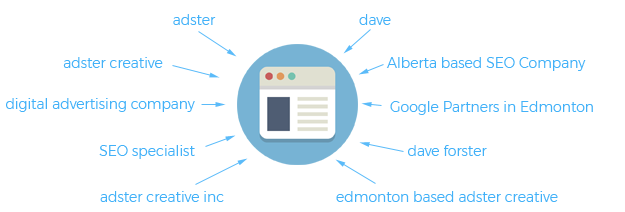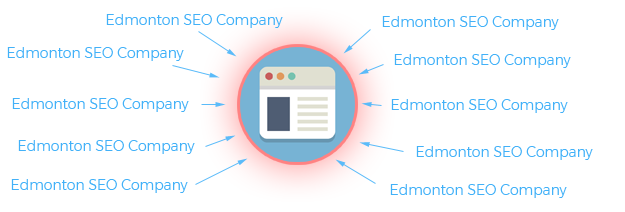Negative SEO Can Happen To You (Part 1): What Is Negative SEO?
Among the many myths, backwards tactics, half-truths and oddities in the fantastical world of search engine optimization, there exists a particularly nefarious ploy: Negative SEO.
What is ‘Negative SEO’
If SEO is a combination of holistic tactics deployed by ethical marketers & business owners to naturally increase organic traffic to a website, ‘negative’ SEO is pretty much the exact opposite of that (as you might expect).
This is to say, negative SEO is a heavily manipulated, intentional and deliberate effort to decrease organic traffic to a website.
Specifically, this tactic involves directing a high volume of low quality backlinks with very deliberate and specific anchor text to a site you wish to damage.
Natural vs. Unnatural
Take a look at the two different ways a website like Adster could be referenced online.
Natural Link Profile – Linking websites are high quality (Alberta Venture, Edmonton Journal, Google) and the way they reference us is ‘natural’):
Unnatural Link Profile – Linking websites are low quality (Adult websites, ‘Shady’ Directories, Private Blog Network) and the way they reference is unnatural:
Why Negative SEO?
The ‘why’ behind Negative SEO is relatively simple. A competitor of yours has had enough of your organic search dominance, is tired of seeing you every time they Google ‘Edmonton widgets’, and wants to take you out.
They deploy the nastiest, dirtiest, & lowest quality tactics possible & direct them all at your site in hopes that all this garbage trips one of Google’s search quality filters based on their quality evaluator guidelines, getting your website in trouble.
Can it work?
While most agree that Negative SEO is a theoretical possibility, there is much debate within the SEO community as to whether negative SEO could actually serve it’s intended purpose.
The main points surrounding fears ‘n fiction on negative SEO flesh out as follows, and are generally accepted truths:
- Almost all websites have some level of low quality links pointing at them by way of scrapers or bots. This is not negative SEO, but rather the way of the web.
- 10’s of thousands of very low quality links that point to your site are rarely a good thing.
- That said, if you are a relatively established site with plentiful trust signals and ‘good’ links, it is very unlikely these links will damage you.
- If you are a relatively new site/brand, and a gazillion low quality links show up unannounced and early on, you may be at minor risk.
- Google gives webmasters a tool which allows you to tell them to ignore certain links, should you fear things are getting out of hand.
- Google is supposed to be smarter than all of this.
Regarding the last point, consider the following:
With the billions Google has invested into quality score algorithms, machine learning, self driving cars and other assorted Hooli nonsense, how could spending 50 bucks sneak past this technical wizardry and wipe a business off the face of search?
Right?
Now, that doesn’t mean they won’t try it…
Part of Adster’s ongoing marketing process includes a combination of automated check-ups on our client’s websites’ health, as well as manual reviews by our SEO team.
One of the main goodies in our toolbelt here is Google’s own Search Console.
With Search Console, Google gives us a fairly comprehensive diagnostic on many website health issues, including information about websites that link to us.
Some of the great details include:
- Who is linking to us: Which 3rd party websites link to our clients?
- What are they linking to: Which page on our website are they linking to?
- Where are they linking from: Which parts of these website are we being linked from?
- When did they link to us: What date did Google discover these links?
- How are they linking to us: What is the anchor text being used?
- How many times are they linking to us: A lot or a little?
Of course, that leaves out the ‘why’, and brings us full circle.
In the late fall of last year, we began to see some very odd data coming in via Search Console for one of our clients, where the many of the above ‘who/what/where/how/when’ was looking pretty damned suspect.
The why? Our client was being targeted with Negative SEO!
How does this story play out? Stay tuned for Part 2, where we share how exactly we narrowed it down, uncovered the culprit, and what we did next. (Hint: Lawyers are involved).
Stay Tuned!

